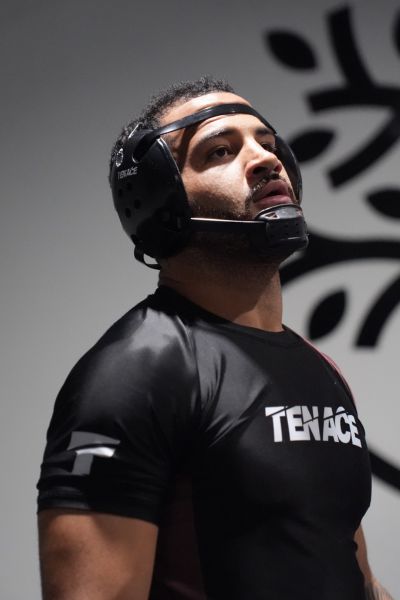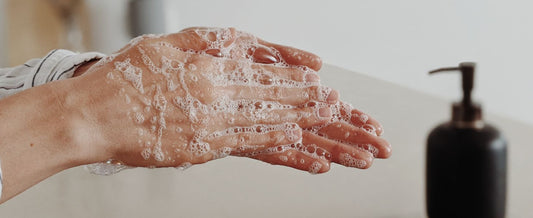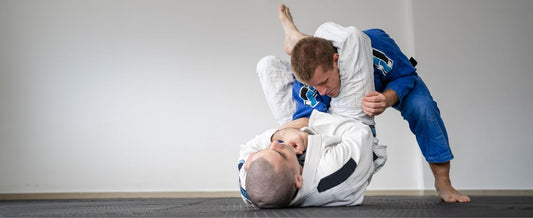Have you ever wondered what your true grappling style is? Do you feel more comfortable pressuring your opponent from the top, seeking to control every move, or do you prefer to maintain distance on the ground, working your sweeps and submissions from the guard?
Grappling, whether in BJJ with a gi or no-gi, pushes you to develop a unique style. But are you a passer or a guard player?
In this blog, we'll delve into the differences between the two styles, the skills you need to excel in each, and how to strengthen your game. And at the end, we have a surprise for you: an interactive quiz to discover your style and an exclusive discount code to equip yourself with Tenace.
Are you a passer in Grappling?
The passer is the fighter who prefers to play from the top, constantly seeking to open his opponent's guard, pass it, and reach dominant positions such as side control, mount, or back.
Common features of pins:
- Strength and pressure: they usually impose their weight and control to wear down their opponent.
- Explosiveness: quick transitions and direct attacks.
- Dynamic play: they are constantly moving, seeking to improve their position.
- Preference for submissions from dominant positions: from mount or rear choke.
Advantages of the pin:
✔️ Lower risk of being subdued, as they maintain the dominant position.
✔️ They control the pace of combat.
✔️ Key strategy in IBJJF rules competitions, where points for passes are valuable.
Challenges of the passer:
❌ You need a lot of physical endurance.
❌ A mistake in passing can leave you vulnerable to a counter or getting caught in a submission.
Are you a guard player?
On the other hand, the guard player prefers the ground, using open, closed, half guard, or techniques like the De La Riva guard to control the opponent, frustrate them, and look for submissions or sweeps.
Common characteristics of guard players:
- Flexibility and agility: your legs are your main weapon.
- Strategic play: They use their hooks and grips to keep their opponent at bay.
- Creative Submissions: Attack from unexpected angles, such as triangles or shoulder presses.
- Patience: They trust their technique and wait for the perfect moment to attack.
Advantages of the guard player:
✔️ Less initial physical wear and tear, as they don't rely on brute force.
✔️ Perfect for smaller or lighter fighters.
✔️ Good guard play can frustrate even the strongest passer.
Guard Player Challenges:
❌ If your guard is missed, you are in a very disadvantageous position.
❌ It takes a lot of time and practice to perfect transitions and submissions from the bottom.
Or can you be both?
Of course! The best grapplers in the world master both styles. In fact, understanding how both guarding and passing work gives you a huge tactical advantage.
However, it's natural to feel more comfortable in one of the two styles at first. The key is to identify which one best suits your body, skills, and mindset... and work from there to become a well-rounded fighter!
How to improve according to your style
If you are a passer:
- Strengthen your pressure: Work on knee slice, leg drag, and smash pass drills.
- Build a solid foundation: Include balance exercises, such as guard passes with elastic bands or resistance drills.
- Protect your knees: When you push hard from above, your knees absorb a lot of impact. Our Tenace knee sleeves will help you avoid injury and train with confidence.
If you are a guard player:
- Improve your flexibility: Stretch your hips, hamstrings, and back.
- Master the transitions: Practice sweeps and arm locks from different angles.
- Protect your ears: Being on the ground means more friction and the risk of cauliflower ear. Protect your ears with our Tenace earmuffs so your aggressive style doesn't take its toll.
Common mistakes according to your style and how to correct them
Pins:
- Pressing without technique: Uncontrolled force wears down and exposes your extremities. ➡️ Solution: Use pressure drills with resistance.
- Neglecting transitions: Attacking without a plan B can leave you trapped. ➡️ Solution: Practice sequential passing combos.
- Ignoring your opponent's legs: If you don't control their legs, you won't pass. ➡️ Solution: Improve your grips and lateral movements.
Guard players:
- Over-reliance on closed guard: Limits your mobility. ➡️ Solution: Introduce dynamic guards like the butterfly or De La Riva.
- Don't look for angles: Attacking from the front is more difficult. ➡️ Solution: Use angle-creating drills from the ground.
- Forget defenses: Only attacking from below leaves openings. ➡️ Solution: Practice active defenses before seeking submissions.
How does your style influence the gear you use?
For Pins:
- Knee pads: Help you maintain pressure without compromising your joints.
- Compression rashguards: Reduce friction burns when passing the guard.
For Guard Players:
- Earmuffs: Protect against constant rubbing during transitions.
- Durable Shorts: Essential for mobility and dynamic defenses.
➡️ At our Tenace store , we have everything you need to adapt to your style and evolve on the mat.
✅ What's your style? Take the test and find out!
Now that you have a clear idea of what it means to be a passer or a guard , it's time to figure out which of the two best defines your game.
Take our QUICK TEST and receive a 10% DISCOUNT in our online store so you can equip yourself with the best Tenace knee pads, earmuffs, rash guards, and kimonos .
🧪 Take the test here ➡️ Discover your grappling style!




